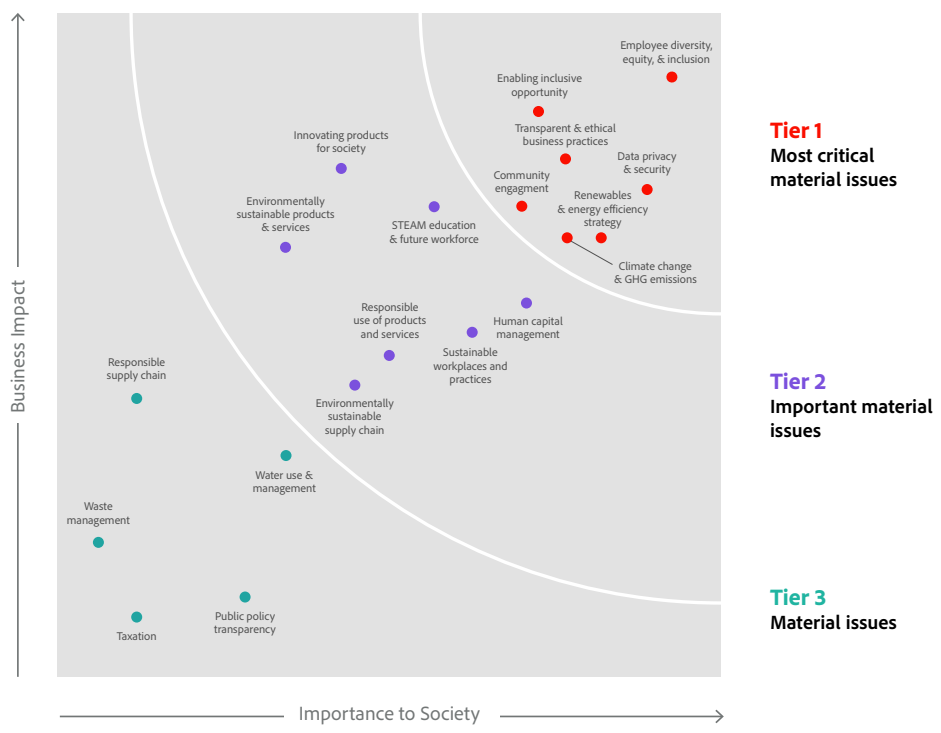You’ve Completed A Materiality Assessment – Now What?
Materiality assessments are a critical component of a robust ESG program, as they allow companies to justify their initiatives and efforts. Whether your company is conducting an inaugural materiality assessment or has completed a customized materiality assessment, you may be wondering how to fully leverage the findings, with whom to share results, and how best to communicate the outputs of the assessment.
Connect the Dots to Strategy
Always keep in mind your initial intent when kicking off the materiality assessment: to support organizational alignment between stakeholder interests and the company’s strategic ESG priorities.
If you have already begun undertaking ESG initiatives, the materiality assessment results can either help to reaffirm your ongoing projects or, if warranted, raise some red flags and allow management to realign. If your organization is in the early stages of your ESG journey, the assessment results can be used to create a much-needed roadmap for long-term priorities.
Regardless of the outcomes of the assessment, remember that there are no right or wrong results, even if they may be unexpected. Your stakeholders’ priorities are what they are, and it is up to management to decide how to best incorporate those priorities into its own strategic efforts.
Now, occasionally, companies will see a divide between the priorities of external stakeholders (customers, shareholders) and internal stakeholders (employees, board members). If your company finds itself in this position, the best solution is to isolate each group’s topmost priorities and begin your efforts there. Over time, internal and external stakeholders may come together on their priorities, but in the meantime, your organization should allocate its focus to each group’s topics of highest importance.
Bring Your Leaders Up to Speed
Materiality assessment results should be shared with your company’s executive leadership and the board of directors, as the results will likely inform goals or initiatives that will require executive sponsorship. Support from leadership also ensures that ESG programs are well aligned with strategic organizational goals and priorities.
Because the results of the assessment are part of your company’s overall narrative, leadership should play an important role in determining how results will be used and published.
Embrace the Disclosure Debate
In the past, publishing materiality assessment results was the typical culmination of the materiality assessment process. However, as the ESG landscape continues to evolve, companies are increasingly balking at this norm. In deciding your own preference, consider these factors.
Pros
By publishing your materiality assessment results, you are candidly promoting broad stakeholder awareness of your specific ESG priorities and rationalizing your organization’s ESG initiatives.
Publishing results can help form a more cohesive story around your ESG programs. A materiality section as part of your corporate social responsibility report (e.g., Fresh Del Monte’s 2020 Sustainability Report) or as part of your sustainability website (e.g., Horace Mann) can add credibility to your corporate sustainability communications.
Cons
Some companies believe that the priorities and interests of its key stakeholders are competitive intelligence that should not be disclosed to the market in detail. Additionally, companies are keen to avoid setting long-term initiatives based on stakeholder priorities from a single snapshot in time.
Additionally, if universally important topics (e.g., diversity and inclusion) are categorized as “low priority” based on the materiality matrix results, stakeholders may incorrectly assume that the topic is deprioritized by the organization.
Pick Your Presentation
Materiality Matrix
The materiality matrix is a common method of depicting materiality results graphically, typically illustrating each topic as points plotted on axes relating the importance to stakeholders and to the business. Frequently, companies will group topics into high-priority areas, mid-tier priority, and lower-tier topics, for example, Adobe (pictured below).
This is an effective depiction of results, particularly when assessment results align closely and logically with existing company initiatives or goals. Graphic representations of results, such as in a matrix, also make effective additions to CSR reports as they can help frame the topics included within the report. However, if the materiality results are not as well aligned or it is difficult to distinguish a trend, it is equally as acceptable to portray results in another format.
List of Material Topics
Companies may also choose to share materiality results in a list format. This is particularly effective for large, global companies that may have a large volume of material topics, such as Target (pictured below). Companies can also control the narrative around their materiality assessment more carefully, as opposed to producing a visual matrix that is more open to interpretation. The key drawback of this approach is that it does distinguish relative importance either to the company or to stakeholders.
Materiality assessments are a valuable element to a robust ESG program. Ensure you are making the most out of your materiality assessment and that you are staying in command of your company’s ESG narrative.
Need help starting or supporting your materiality assessment? Reach out to us for any of your materiality assessment needs.



